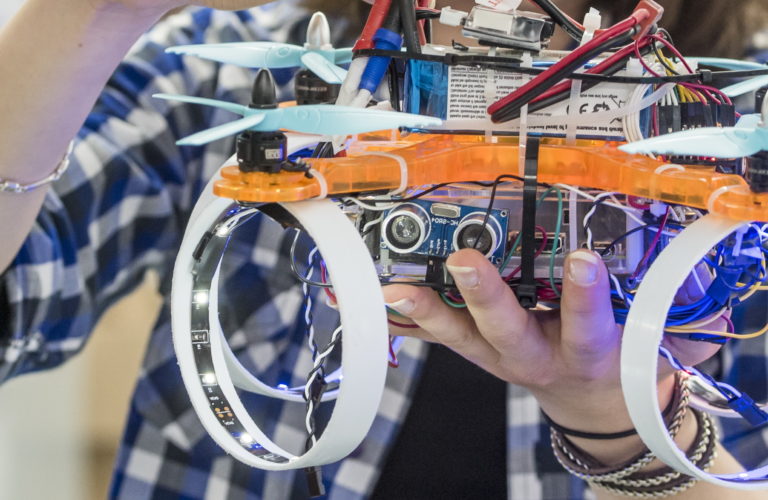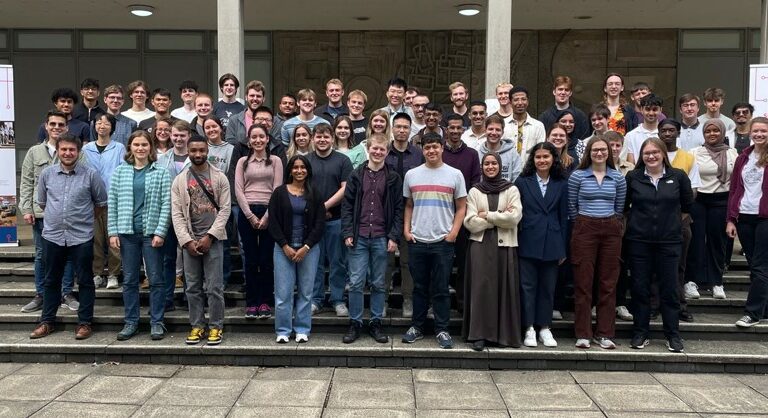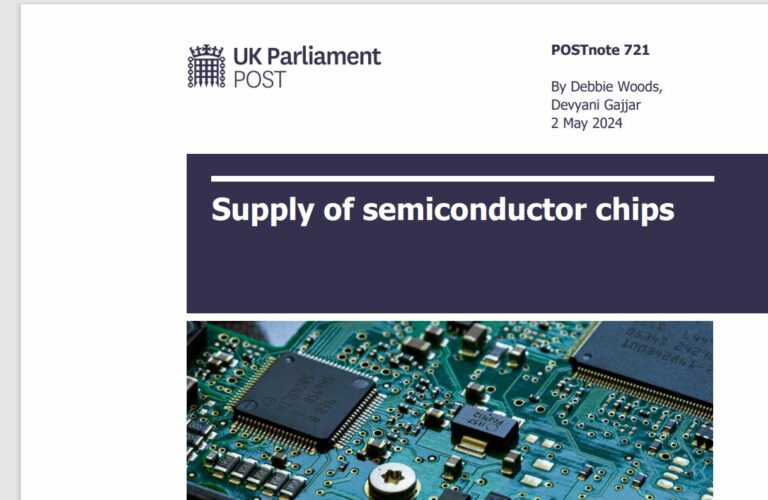“I was unfamiliar with a lot of this, and it was a fun challenge to first understand what it was I was trying to design, and then work out how I was going to implement it.”
Alice
Guest blog by Alice (second from right above), one of 2019’s recipients of the Dialog Award for Female Undergraduates. Alice was also an Arkwright Engineering Scholar, a programme administered by The Smallpeice Trust. The UKESF has been collaborating with The Smallpeice Trust on STEM and Electronics initiatives since 2016.
Last year I completed my first eight weeks in the Electronics industry at Dialog Semiconductor, as part of receiving the Dialog Award for Female Undergraduates. Here I will recount my experience working in the company, and what it’s been like so far studying Engineering as a woman.
While at school, as much as I enjoyed the theory in Maths and Science, I knew I wanted to learn how to use them as tools to design new solutions to real problems. This is what led me to Engineering. We did basic circuits and electromagnetics in Physics and I particularly enjoyed learning about Boolean logic and microprocessors in Computer Science; however, I still wanted to know more about how everything fits together to make all the electronic devices we rely on today. Having just completed the first year of my degree, I think I’m on my way.
For me, interning at Dialog for eight weeks was a great experience to consolidate and build upon what I have been learning at university in a real workplace. Dialog designs and sells mixed signal ICs, which means they combine digital and analog technologies on chips. I was working in the Digital Design department, which involves designing the logic that controls the operations of the chip. This was my first time practically applying the basics of digital circuits I had been taught. I started simple by learning a new hardware description language called Verilog, which I could use to describe circuits in computer code. I then designed ‘test benches’ to simulate the input signals and see if they were all working. I tried designing a counter, finite state machines, an APB (a bus protocol) slave interface and various FIFOs. I was unfamiliar with a lot of this, and it was a fun challenge to first understand what it was I was trying to design, and then work out how I was going to implement it.
Once I had some experience with the software tools and processes at the company I began to help with a conference paper on an asynchronous microcontroller. I had no prior experience with ideas in asynchronous logic, which is when there is no clock to time the processes. I enjoyed the opportunity to think about digital circuits in a different way and learn about challenging topics with the help of experts in the subject. In my role I created schematics and ran simulations in order to gather performance data, and had a go at designing asynchronous logic myself. On top of this, throughout my time at the company, I was shadowing a commercial project and I got to learn about how they plan and organise their team in order to meet a deadline in several months’ time. I also observed the collaboration between all the teams needed, including with colleagues in other countries. Overall, I think working at Dialog has helped me understand how what I am learning is used in a professional environment, as well as the importance of communication and other non-technical skills in an engineering team.
Before university I was fortunate to go to an all-girls grammar school, so university was my first experience of being outnumbered by the boys in my lectures, labs and supervisions. However, I have never found this to be an issue, particularly not enough to stop me from pursuing whatever subject I find most interesting. The proportion of females in Electronics won’t change unless we have more getting into it and applying, so I urge anyone with an interest in Maths, Science, how things work and how they can be improved, to look into Electronic Engineering degrees and apprenticeships.
Find out more about the Award, the inaugural recipients and the UKESF’s work with Dialog Semiconductor in this article.



